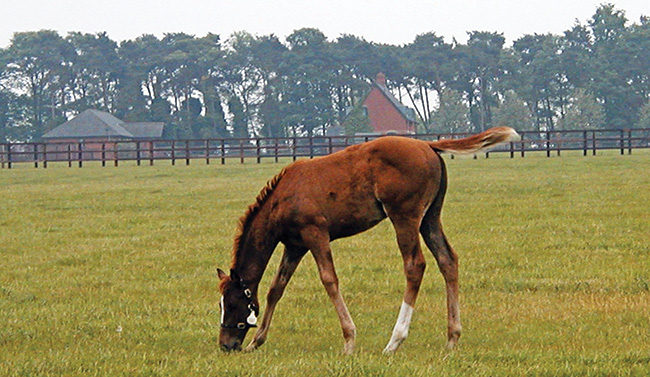American Farriers Journal
American Farriers Journal is the “hands-on” magazine for professional farriers, equine veterinarians and horse care product and service buyers.

Figure 1: A Thoroughbred foal grazing with its right fore protracted.
Horses tend to favor one side over the other, which has implications for hoof care and the farrier
Laterality is the term used to describe any animal’s propensity for using one side of the body predominantly and the preference for one limb over the other opposing limb. Put simply, we can call it “one-sidedness.”
Human beings are predominantly right-sided but that does not mean that there are no left-handed people. The ratio of right-handed to left-handed people is about nine-to-one. Our laterality means that we engage in lateralized behavior. This shows itself in the way we pick up a coffee mug and the way we play golf, for example. Pathologists see it more subtly in the way our bodies are stronger or show more wear on one side.
Therefore, we should not be surprised that horses also show signs of laterality and lateralized behavior. This article discusses the prevalence of laterality and questions whether we should take laterality into account when we trim and shoes horses.
Very little has been written on the subject of laterality in horses and how it impacts their conformation and behavior, let alone on how we as farriers can use such information in our work. There have, however, been two important studies published as research papers in the last 10 years. McGreevy and Rodgers, 2005, looked at “Motor and sensory laterality in Thoroughbred horses.” They showed that there was a correlation…